Draft:House of Hasib
Submission declined on 22 October 2024 by Snowman304 (talk).
Where to get help
How to improve a draft
You can also browse Wikipedia:Featured articles and Wikipedia:Good articles to find examples of Wikipedia's best writing on topics similar to your proposed article. Improving your odds of a speedy review To improve your odds of a faster review, tag your draft with relevant WikiProject tags using the button below. This will let reviewers know a new draft has been submitted in their area of interest. For instance, if you wrote about a female astronomer, you would want to add the Biography, Astronomy, and Women scientists tags. Editor resources
|  |
| Submission declined on 17 October 2024 by Significa liberdade (talk). This submission appears to be taken from https://amritmahotsav.nic.in/district-reopsitory-detail.htm?25372. Wikipedia cannot accept material copied from elsewhere, unless it explicitly and verifiably has been released to the world under a suitably free and compatible copyright license or into the public domain and is written in an acceptable tone—this includes material that you own the copyright to. You should attribute the content of a draft to outside sources, using citations, but copying and pasting or closely paraphrasing sources is not acceptable. The entire draft should be written using your own words and structure. Declined by Significa liberdade 3 months ago.
|  |
| Submission declined on 4 November 2023 by Theroadislong (talk). This draft's references do not show that the subject qualifies for a Wikipedia article. In summary, the draft needs multiple published sources that are: Declined by Theroadislong 15 months ago.
|  |
 Comment: many, many more citations needed; family tree (trees?) in Ancestry section is messy and take up too much space Snowman304|talk 02:03, 22 October 2024 (UTC)
Comment: many, many more citations needed; family tree (trees?) in Ancestry section is messy and take up too much space Snowman304|talk 02:03, 22 October 2024 (UTC)
 Comment: please read WP:REFB for help with correctly formatting sources. Theroadislong (talk) 20:37, 4 November 2023 (UTC)
Comment: please read WP:REFB for help with correctly formatting sources. Theroadislong (talk) 20:37, 4 November 2023 (UTC)
 Comment: The citations here are not formatted properly, read Wikipedia's guide on how to do inline citations :) -- NotCharizard 🗨 06:56, 5 September 2023 (UTC)
Comment: The citations here are not formatted properly, read Wikipedia's guide on how to do inline citations :) -- NotCharizard 🗨 06:56, 5 September 2023 (UTC)
The House of Hasib (Urdu :خاندان حسیب, pronounced : Khanédan Haseeb, ) also known as House of Rajhat, House Of Zarif , named after the 17th Century Warlord Mir Syed Muhammad Zarif Khan is an Indo-Syrian Hussaynid Hashemite minor aristocratic dynasty of India. They began as a family of Islamic Jurisprudential Scholars who came to India at the advent of the Muslim conquests in the Indian subcontinent and later became the Sufi Warrior-Saint clan of Sadaat e Rajhat in Rajhat Shareef, Nawada, Bihar later becoming courtiers and bureucrats in Bihar & Bengal. They come under the Khanqahi Saadaat group in the broader Ashrafi Muslim community in India as many of them became leaders of Islamic religious orders, Khanqahs, Madrasas & Dargahs. The family is of mixed Arab, Sassanian Persian, Oghuz Turk and Mongol Ancestry. Members of this family have traditionally contributed religion, bureaucracy & scholarship.[1]
| House of Hasib خاندان حسیب | |
|---|---|
| Taluqadari | |
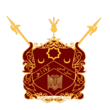 Coat of Arms of the House of Hasib | |
| Parent house | House of Hashim House of Sasan |
| Country | India |
| Founded | 17th Century |
| Founder | Mir Syed Muhammad Zarif ( Shah Hasib I) |
| Final head | Mir Syed Tasavvur Imam( Shah Hasib VIII) |
| Titles |
|
| Style(s) | Shah Hasib |
| Traditions | |
| Motto |
"فَإِنَّ مَعَ الْعُسْرِ يُسْرًا " Indeed with hardship also comes ease
"وَتُعِزُّ مَن تَشَآءُ وَتُذِلُّ مَن تَشَآءُ ۖ" God gives honor to whom he pleases and take away honor from whom he pleases
هَٰذَا مِن فَضْلِ رَبِّي This is by the Grace of my Lord
فِي سَبِيلِ ٱللَّٰهِ On The Path Of God |
| Estate(s) |
|
| Cadet branches |
|
Ancestry
[edit]
| Sarah | Ibrahim | Hajra | |||||||||||||||||||||||||||||||||||||||||||||||||||||||||||||||||||||||||||||||||
| Ishaaq | Ismail | Rala Bint Mudad Al-Jurhum | |||||||||||||||||||||||||||||||||||||||||||||||||||||||||||||||||||||||||||||||||
| Qedar Ibn Ismail | |||||||||||||||||||||||||||||||||||||||||||||||||||||||||||||||||||||||||||||||||||
| Aram ibn Qedar | |||||||||||||||||||||||||||||||||||||||||||||||||||||||||||||||||||||||||||||||||||
| Adwa Ibn Aram | |||||||||||||||||||||||||||||||||||||||||||||||||||||||||||||||||||||||||||||||||||
| Wazi Ibn Adwa | |||||||||||||||||||||||||||||||||||||||||||||||||||||||||||||||||||||||||||||||||||
| Sami Ibn Wazi | |||||||||||||||||||||||||||||||||||||||||||||||||||||||||||||||||||||||||||||||||||
| Zarih Ibn Sami | |||||||||||||||||||||||||||||||||||||||||||||||||||||||||||||||||||||||||||||||||||
| Nahid Ibn Zarih | |||||||||||||||||||||||||||||||||||||||||||||||||||||||||||||||||||||||||||||||||||
| Mukhsar Ibn Nahid | |||||||||||||||||||||||||||||||||||||||||||||||||||||||||||||||||||||||||||||||||||
| Alham Ibn Mukhsar | |||||||||||||||||||||||||||||||||||||||||||||||||||||||||||||||||||||||||||||||||||
| Afnad Ibn Alham | |||||||||||||||||||||||||||||||||||||||||||||||||||||||||||||||||||||||||||||||||||
| Aisar Ibn Afnad | |||||||||||||||||||||||||||||||||||||||||||||||||||||||||||||||||||||||||||||||||||
| Deshan Ibn Aisar | |||||||||||||||||||||||||||||||||||||||||||||||||||||||||||||||||||||||||||||||||||
| Ayd Ibn Deshan | |||||||||||||||||||||||||||||||||||||||||||||||||||||||||||||||||||||||||||||||||||
| Aravi Ibn Ayd | |||||||||||||||||||||||||||||||||||||||||||||||||||||||||||||||||||||||||||||||||||
| Yalhan Ibn Aravi | |||||||||||||||||||||||||||||||||||||||||||||||||||||||||||||||||||||||||||||||||||
| Yazin Ibn Yalhan | |||||||||||||||||||||||||||||||||||||||||||||||||||||||||||||||||||||||||||||||||||
| Yathrabi Ibn Yazin | |||||||||||||||||||||||||||||||||||||||||||||||||||||||||||||||||||||||||||||||||||
| Sambyr Ibn Yathrabi | |||||||||||||||||||||||||||||||||||||||||||||||||||||||||||||||||||||||||||||||||||
| Hamdan Ibn Sambyr | |||||||||||||||||||||||||||||||||||||||||||||||||||||||||||||||||||||||||||||||||||
| Adda'a Ibn Sambyr | |||||||||||||||||||||||||||||||||||||||||||||||||||||||||||||||||||||||||||||||||||
| Ubaid Ibn Adda'a | |||||||||||||||||||||||||||||||||||||||||||||||||||||||||||||||||||||||||||||||||||
| Abqar Ibn Ubaid | |||||||||||||||||||||||||||||||||||||||||||||||||||||||||||||||||||||||||||||||||||
| Ayd Ibn Abqar | |||||||||||||||||||||||||||||||||||||||||||||||||||||||||||||||||||||||||||||||||||
| Maqi ibn Ayd | |||||||||||||||||||||||||||||||||||||||||||||||||||||||||||||||||||||||||||||||||||
| Nahesh Ibn Maqi | |||||||||||||||||||||||||||||||||||||||||||||||||||||||||||||||||||||||||||||||||||
| Jahym Ibn Nahesh | |||||||||||||||||||||||||||||||||||||||||||||||||||||||||||||||||||||||||||||||||||
| Tabikh Ibn Jahym | |||||||||||||||||||||||||||||||||||||||||||||||||||||||||||||||||||||||||||||||||||
| Yadlaf Ibn Tabikh | |||||||||||||||||||||||||||||||||||||||||||||||||||||||||||||||||||||||||||||||||||
| Bildaf Ibn Yadlaf | |||||||||||||||||||||||||||||||||||||||||||||||||||||||||||||||||||||||||||||||||||
| Hazza Ibn Bildaf | |||||||||||||||||||||||||||||||||||||||||||||||||||||||||||||||||||||||||||||||||||
| Nashid Ibn Hazza | |||||||||||||||||||||||||||||||||||||||||||||||||||||||||||||||||||||||||||||||||||
| Awwam Ibn Nashid | |||||||||||||||||||||||||||||||||||||||||||||||||||||||||||||||||||||||||||||||||||
| Ubay Ibn Awwam | |||||||||||||||||||||||||||||||||||||||||||||||||||||||||||||||||||||||||||||||||||
| Qawwam Ibn Uday | |||||||||||||||||||||||||||||||||||||||||||||||||||||||||||||||||||||||||||||||||||
| Bouz Ibn Kamwal | |||||||||||||||||||||||||||||||||||||||||||||||||||||||||||||||||||||||||||||||||||
| Aws Ibn Bouz | |||||||||||||||||||||||||||||||||||||||||||||||||||||||||||||||||||||||||||||||||||
| Salamoun Ibn Aws | |||||||||||||||||||||||||||||||||||||||||||||||||||||||||||||||||||||||||||||||||||
| Humaysi Ibn Salamoun | |||||||||||||||||||||||||||||||||||||||||||||||||||||||||||||||||||||||||||||||||||
| A'dd Ibn Humaysi | |||||||||||||||||||||||||||||||||||||||||||||||||||||||||||||||||||||||||||||||||||
| Adnan Ibn A'dd | |||||||||||||||||||||||||||||||||||||||||||||||||||||||||||||||||||||||||||||||||||
| Ma'ad ibn Adnan | |||||||||||||||||||||||||||||||||||||||||||||||||||||||||||||||||||||||||||||||||||
| Nizar ibn Ma'ad | |||||||||||||||||||||||||||||||||||||||||||||||||||||||||||||||||||||||||||||||||||
| Mudar ibn Nizar | |||||||||||||||||||||||||||||||||||||||||||||||||||||||||||||||||||||||||||||||||||
| Ilyas ibn Mudar | |||||||||||||||||||||||||||||||||||||||||||||||||||||||||||||||||||||||||||||||||||
| Mudrikah ibn Ilyas | |||||||||||||||||||||||||||||||||||||||||||||||||||||||||||||||||||||||||||||||||||
| Khuzayma ibn Mudrika | |||||||||||||||||||||||||||||||||||||||||||||||||||||||||||||||||||||||||||||||||||
| Kinanah ibn Khuzayma] | |||||||||||||||||||||||||||||||||||||||||||||||||||||||||||||||||||||||||||||||||||
| Al-Nadr ibn Kinanah | |||||||||||||||||||||||||||||||||||||||||||||||||||||||||||||||||||||||||||||||||||
| Malik ibn al-Nadr | |||||||||||||||||||||||||||||||||||||||||||||||||||||||||||||||||||||||||||||||||||
| Fihr ibn Malik | |||||||||||||||||||||||||||||||||||||||||||||||||||||||||||||||||||||||||||||||||||
| Ghalib ibn Fihr | |||||||||||||||||||||||||||||||||||||||||||||||||||||||||||||||||||||||||||||||||||
| Lu'ayy ibn Ghalib | |||||||||||||||||||||||||||||||||||||||||||||||||||||||||||||||||||||||||||||||||||
| Ka'b ibn Lu'ayy | |||||||||||||||||||||||||||||||||||||||||||||||||||||||||||||||||||||||||||||||||||
| Murrah ibn Ka'b | |||||||||||||||||||||||||||||||||||||||||||||||||||||||||||||||||||||||||||||||||||
| Kilab ibn Murrah | Fatimah bint Sa'd | ||||||||||||||||||||||||||||||||||||||||||||||||||||||||||||||||||||||||||||||||||
| Zuhrah ibn Kilab (progenitor of Banu Zuhrah) | Qusai ibn Kilab | Hubba bint Hulail | |||||||||||||||||||||||||||||||||||||||||||||||||||||||||||||||||||||||||||||||||
| `Abd Manaf ibn Zuhrah | `Abd Manaf ibn Qusai | Atikah bint Murrah | |||||||||||||||||||||||||||||||||||||||||||||||||||||||||||||||||||||||||||||||||
| Wahb ibn `Abd Manaf | Hashim ibn 'Abd Manaf (progenitor of Banu Hashim) | Salma bint `Amr | |||||||||||||||||||||||||||||||||||||||||||||||||||||||||||||||||||||||||||||||||
| Fatimah bint `Amr | `Abdul-Muttalib | Halah bint Wuhayb | |||||||||||||||||||||||||||||||||||||||||||||||||||||||||||||||||||||||||||||||||
| Aminah | `Abdullah | Az-Zubayr | Harith | Hamza | |||||||||||||||||||||||||||||||||||||||||||||||||||||||||||||||||||||||||||||||
| Thuwaybah | Halimah | Abu Talib | Abbas | Abu Lahab | 6 other sons and 6 daughters | ||||||||||||||||||||||||||||||||||||||||||||||||||||||||||||||||||||||||||||||
| Muhammad | Khadija | `Abd Allah ibn `Abbas | |||||||||||||||||||||||||||||||||||||||||||||||||||||||||||||||||||||||||||||||||
| Fatima | Ali Alids | Qasim | `Abd Allah | ||||||||||||||||||||||||||||||||||||||||||||||||||||||||||||||||||||||||||||||||
| Zaynab | Ruqayya | Uthman Ibn Affan | Umm Kulthum | ||||||||||||||||||||||||||||||||||||||||||||||||||||||||||||||||||||||||||||||||
| Ali ibn Zainab | Umamah bint Zainab | ||||||||||||||||||||||||||||||||||||||||||||||||||||||||||||||||||||||||||||||||||
| Muhsin ibn Ali | Hasan ibn Ali Hasanids | Umm Ishaq bint Talha ibn Ubayd Allah | Shehzade Sherbanu Bint Yazdgard III Last Princess Of House Of Sasan 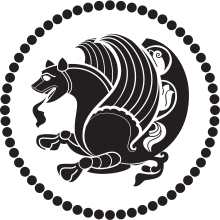 | Husayn ibn Ali Husaynids  | Umm Kulthum bint Ali | Zaynab bint Ali | |||||||||||||||||||||||||||||||||||||||||||||||||||||||||||||||||||||||||||||
| Fatima bint Hasan | Ali Ibn Husayn Zain Ul Abedin Al Sajjad | ||||||||||||||||||||||||||||||||||||||||||||||||||||||||||||||||||||||||||||||||||
| Syed Abd-Allah ibn Ali Al Bahr Al Ilm Islamic Scholar In Alexandria | |||||||||||||||||||||||||||||||||||||||||||||||||||||||||||||||||||||||||||||||||||
| Syed Haroun ibn Abd-Allah | |||||||||||||||||||||||||||||||||||||||||||||||||||||||||||||||||||||||||||||||||||
| Syed Idris ibn Haroun | |||||||||||||||||||||||||||||||||||||||||||||||||||||||||||||||||||||||||||||||||||
| Syed Nuh ibn Idris Al-Khajul | |||||||||||||||||||||||||||||||||||||||||||||||||||||||||||||||||||||||||||||||||||
| Syed Yousuf ibn Nuh | |||||||||||||||||||||||||||||||||||||||||||||||||||||||||||||||||||||||||||||||||||
| Haji Syed Salman ibn Yousuf | |||||||||||||||||||||||||||||||||||||||||||||||||||||||||||||||||||||||||||||||||||
| Qadi Syed Zakariyya ibn Salman Al-Baghdadi Studied At The newly estabilished Jamia Al Nizamiyya | |||||||||||||||||||||||||||||||||||||||||||||||||||||||||||||||||||||||||||||||||||
| Faqīh Syed Muhammad ibn Zakarriya Al-Div Sharia Counsellor at the Div'-an (Sharia Court)in Baghdad | |||||||||||||||||||||||||||||||||||||||||||||||||||||||||||||||||||||||||||||||||||
| Danishmand Syed Ishaaq ibn Muhammad Al Halabi Sufi Mystic, Professor & Scholar | |||||||||||||||||||||||||||||||||||||||||||||||||||||||||||||||||||||||||||||||||||
| Qadi Syed Yaqub ibn Ishaaq Al-Baghdadi W'al Halabi Migrated to Baghdad from Halab and then to Afghanistan And and then to India as Qadi Under Sultan Muhammad Ghori | |||||||||||||||||||||||||||||||||||||||||||||||||||||||||||||||||||||||||||||||||||
| Qadi Syed Ibrahim ibn Yaqub Al-Halabi | |||||||||||||||||||||||||||||||||||||||||||||||||||||||||||||||||||||||||||||||||||
| DanishmandSyed Ibrahim ibn Ibrahim Al-Halabi | |||||||||||||||||||||||||||||||||||||||||||||||||||||||||||||||||||||||||||||||||||
| Qadi Syed Sho'aib ibn Ibrahim Al-Khubruh | |||||||||||||||||||||||||||||||||||||||||||||||||||||||||||||||||||||||||||||||||||
| Qadi Syed Idrees ibn Sho'aib Al- Samidani | |||||||||||||||||||||||||||||||||||||||||||||||||||||||||||||||||||||||||||||||||||
| Qadi Ul Quzat Syed Irteza Muhammad Musa ibn Idrees Al- Majzoob | |||||||||||||||||||||||||||||||||||||||||||||||||||||||||||||||||||||||||||||||||||
| Qadi Ul Quzat Haji Syed Abu Kamal ibn Musa | |||||||||||||||||||||||||||||||||||||||||||||||||||||||||||||||||||||||||||||||||||
| Qadi Ul Quzat Pir Syed Mansur ibn Abu Kamal Bihari Gayavi | |||||||||||||||||||||||||||||||||||||||||||||||||||||||||||||||||||||||||||||||||||
| Qadi Ul Quzat Syed Sulayman ibn Mansur | |||||||||||||||||||||||||||||||||||||||||||||||||||||||||||||||||||||||||||||||||||
| Qadi Syed Abd Al Aziz ibn Sulayman | |||||||||||||||||||||||||||||||||||||||||||||||||||||||||||||||||||||||||||||||||||
| Hafiz Ul Qu'ran Syed Sadr Al Din ibn Abd Al Aziz | |||||||||||||||||||||||||||||||||||||||||||||||||||||||||||||||||||||||||||||||||||
| Qadi Syed Badr Al Din ibn Sadr Al Din | |||||||||||||||||||||||||||||||||||||||||||||||||||||||||||||||||||||||||||||||||||
| Makhdoom Qadi Shah Syed Farid Al Din FIrdausi ibn Badr Al Din Budhan Diwan | |||||||||||||||||||||||||||||||||||||||||||||||||||||||||||||||||||||||||||||||||||
| Qadi Syed Mahmud ibn Farid Al Din | |||||||||||||||||||||||||||||||||||||||||||||||||||||||||||||||||||||||||||||||||||
| Qadi Syed Abu Muhammad ibn Mahmud | |||||||||||||||||||||||||||||||||||||||||||||||||||||||||||||||||||||||||||||||||||
| Qadi Syed Muhammad Taj ibn Abu Muhammad | |||||||||||||||||||||||||||||||||||||||||||||||||||||||||||||||||||||||||||||||||||
| Makhdoom Qadi Shah Syed Abd Al Razzaq ibn Muhammad Taj Jadd i Ala Sadaat i Rajhat | |||||||||||||||||||||||||||||||||||||||||||||||||||||||||||||||||||||||||||||||||||
| Shah Hasib I MirSyed Muhammad Zarif ibn Abd Al Razzaq Founder Of Rajhat & Eponymous Ancestor Of The House Of Hasib | |||||||||||||||||||||||||||||||||||||||||||||||||||||||||||||||||||||||||||||||||||
| Shah Hasib II Mir Syed Ata Allah Ibn Muhammad Zarif | |||||||||||||||||||||||||||||||||||||||||||||||||||||||||||||||||||||||||||||||||||
| Shah Hasib III Mir Syed Khair Allah ibn Ata Allah | |||||||||||||||||||||||||||||||||||||||||||||||||||||||||||||||||||||||||||||||||||
| Shah Hasib IV Mir Syed Lutf Allah ibn Khair Allah | |||||||||||||||||||||||||||||||||||||||||||||||||||||||||||||||||||||||||||||||||||
| Shah Hasib V Mir Syed Jamal Ali ibn Lutf Allah | |||||||||||||||||||||||||||||||||||||||||||||||||||||||||||||||||||||||||||||||||||
| 1st Wife | Shah Hasib VI Mir Syed Tafazzul-i-Imam ibn Khair Allah | 2nd Wife | |||||||||||||||||||||||||||||||||||||||||||||||||||||||||||||||||||||||||||||||||
| House Of Musa Al-Kazim | Syeda Aqla Bint Qasimuddin Rajhati | Shah Hasib VII Mir Syed Fazal-i-Imam ibn Tafazzul-i-Imam | Begum Aamna Khan Bint Subahdar Hasibuddin Khan | Mian Syed Afzal-i-Imam | Syeda Zainab Khatun | ||||||||||||||||||||||||||||||||||||||||||||||||||||||||||||||||||||||||||||||
| Syed Farzand Ali ibn Awla Ali | Syeda Azmat-Un-Nisa | Syeda Mursaleena Bint Taharat Alam | Shah Hasib VIII Mir Syed Tasavvur-i-Imam ibn Fazal-i-Imam | Mian Syed Marhamat Husayn | Syeda Atiqa Khatun | ||||||||||||||||||||||||||||||||||||||||||||||||||||||||||||||||||||||||||||||
| 'Makhdoom Syed Ghiyas Al Din ibn Farzand Ali' Shareefi Razvi | Syeda Saira Khatun | Alim Al Kalam Mirza Syed Siraj Ul Islam
(assumed de facto Shah Hasib IX) | Mirza Syed Waiz Ul Haque | Mian Syed Ghulam-i-Jilani | Syeda Mursalina Al Bitho Shareef | ||||||||||||||||||||||||||||||||||||||||||||||||||||||||||||||||||||||||||||||
| 'Dr.Syed Faiyaz Al DIn' Shareefi Razvi | Syeda Fatima bint Ghiyas Al DIn | Alim Al Kalam Mirza Syed Ali Imam | Amin Family Tehsildars Of Tekari Raj | Mian Syed Ghulam -i-Rabbani | Syeda Khadija Al Kubra Bint Mir Qasim Ali Nawab Of Makhdumpur, Bihar | Advocate Syed Azhar Husayn Mukhtar "Maccho" | |||||||||||||||||||||||||||||||||||||||||||||||||||||||||||||||||||||||||||||
| 5 More Daughters & 2 More Sons | Sajjadahs & Mutawalli's Of Khanqah Ghiyasiya Shareefiya, Shahsaram | Dr.Syed Husayn Imam Quadrie | Syeda Sajida bint Muhammad Amin | Mian Syed Wasi Al Din | Syeda Ghausiya Bint Nabi Jaan Itwan Hafiz Family | Syed Moiz Al Din | |||||||||||||||||||||||||||||||||||||||||||||||||||||||||||||||||||||||||||||
| Syeda Nuzhat Jahan | Dr. Syed Mohsyn Imam | ||||||||||||||||||||||||||||||||||||||||||||||||||||||||||||||||||||||||||||||||||
Extended Relations
1. Pirbigha,Itwan
| Hafiz Family | |||||||||||||||||||||||||||||||||||||||||||||||||||||||||||||||||||||||||||||||||||||||||||||||||||||||
| Hafiz Syed Ahmad | Hafiz Syed Nabi Jaan | Syeda Mujiban Khatun | Hafiz Syed Ahsan | ||||||||||||||||||||||||||||||||||||||||||||||||||||||||||||||||||||||||||||||||||||||||||||||||||||
| Al-Amin Family | |||||||||||||||||||||||||||||||||||||||||||||||||||||||||||||||||||||||||||||||||||||||||||||||||||||||
| Syeda Ahmadi Khatun | Tehsildar Syed Muhammad Amin Tehsildar To Maharaja Gopal Saran Narayan Singh Tekari | Syeda Aminah | Syeda Ghausiya | Syed Wasi Al Din Ibn Ghulam-i-Rabbani Wassan | |||||||||||||||||||||||||||||||||||||||||||||||||||||||||||||||||||||||||||||||||||||||||||||||||||
| Qadi Syed Ifthikhar ibn Maqbool Imam Chisti Monami Hifzullah Sajjadah Of Khanqah Mazahiriya, Abgila | Syeda Ahmadiyya | Syeda Sajida | Dr. Syed Hussayn ibn Ali Imam Quadrie | Syeda Walima | Syed Najm Al Bari | ||||||||||||||||||||||||||||||||||||||||||||||||||||||||||||||||||||||||||||||||||||||||||||||||||
| Syeda Shafiqa Bint Ghiyas Al Din Shareefi Razvi | Syed Abu Miuhammad Amin, Mutawalli Of Tekari Raj Estate | ||||||||||||||||||||||||||||||||||||||||||||||||||||||||||||||||||||||||||||||||||||||||||||||||||||||
2. Rajhat Shareef
| Al-Bari Family | |||||||||||||||||||||||||||||||||||||||||||||||||||||||||||||||||||||||||||||||||||||||||||||||||||||||||||||||||||||
| Syed Abd Al Bari | Syed Muhammad Shafi Amin | Syeda Khadija Al Bari | Syed Abd As Salam Al Bari | Syed Hadi E Hashmi Al Bari Educationist & Founder Of Hadi Hashmi Education Society | Syeda Rajwa | Professor Syed Majid, From Pachrukhi, One of the First Professors of Patna College | Hakim Syed Azimuddin Doctor In Pachrukhi, Cousin Of Abd-Al Bari. Azim Chowk,Pachrukhi Is Named After him | ||||||||||||||||||||||||||||||||||||||||||||||||||||||||||||||||||||||||||||||||||||||||||||||||||||||||||||||
| Tehsildar Syed Muhammad Amin Tehsildar To Maharaja Gopal Saran Narayan Singh Tekari | Syeda Majida Khatun | Syed Bismillah Ibn Azim Education Officer During the British Raj | |||||||||||||||||||||||||||||||||||||||||||||||||||||||||||||||||||||||||||||||||||||||||||||||||||||||||||||||||||
| Syed Shams Al Bari | Syeda Walima Bint Syed Nabi Jaan Hafiz | Syed Najm Al Bari | Syed Rafique Al Bari | ||||||||||||||||||||||||||||||||||||||||||||||||||||||||||||||||||||||||||||||||||||||||||||||||||||||||||||||||||
| Syed Irteza Al Bari | Syed Taqi Al Bari | ||||||||||||||||||||||||||||||||||||||||||||||||||||||||||||||||||||||||||||||||||||||||||||||||||||||||||||||||||||
3. Shahsaram
| Farzand Ali Family | Farasat Hussayn Family Zamindar Of Sherghati During Rohilla Rule | ||||||||||||||||||||||||||||||||||||||||||||||||||||||||||||||||||||||||||||||||||||||||||||||||||||||||||||||||||||||||||||||||||||||||||||||||||||||||||||
| Syed Ghiyath Al Din Shareefi Razvi | Syeda Saira Khatun | Syeda Amna | Daroga Syed Karim Al Din | Syeda Amina | Syeda Saghira | Varasat Hussayn | |||||||||||||||||||||||||||||||||||||||||||||||||||||||||||||||||||||||||||||||||||||||||||||||||||||||||||||||||||||||||||||||||||||||||||||||||||||||
| Capt.Dr. Syed Manzar Karim | |||||||||||||||||||||||||||||||||||||||||||||||||||||||||||||||||||||||||||||||||||||||||||||||||||||||||||||||||||||||||||||||||||||||||||||||||||||||||||||
| Syed Anwar Karim | Syeda Shahida Malik | Syed Afzal Karim | Syed Inam Karim | ||||||||||||||||||||||||||||||||||||||||||||||||||||||||||||||||||||||||||||||||||||||||||||||||||||||||||||||||||||||||||||||||||||||||||||||||||||||||||
| Syed Saba Karim | |||||||||||||||||||||||||||||||||||||||||||||||||||||||||||||||||||||||||||||||||||||||||||||||||||||||||||||||||||||||||||||||||||||||||||||||||||||||||||||
| Dr.Syed Faiyaz Al Din | Syeda Sughra | Shah Syed Ali Ahmad Darwish Sajjadah Of Khanqah Kabiriya of Syed Shah Kabir-ud-Din Ahmed Darwish & Mutawalli Of Khanqah Kabiriya Zamindari Estate | Syeda Mokima | Syeda Fatima | Syed Ali Ibn Tasavvur Imam Quadrie | ||||||||||||||||||||||||||||||||||||||||||||||||||||||||||||||||||||||||||||||||||||||||||||||||||||||||||||||||||||||||||||||||||||||||||||||||||||||||
| Syeda Husna (Only Child) | Syed Iqbal Karim Mutawalli Of Khanqah Kabiriya Estates | Dr.Syed Hussayn Imam Quadrie | Dr. Syed Mohsyn Imam Quadrie | Syeda Nuzhat Jahan | |||||||||||||||||||||||||||||||||||||||||||||||||||||||||||||||||||||||||||||||||||||||||||||||||||||||||||||||||||||||||||||||||||||||||||||||||||||||||
| Syed Nawab Akhtar | Syed Anwar Azeem | Syed Meraj Akhtar | |||||||||||||||||||||||||||||||||||||||||||||||||||||||||||||||||||||||||||||||||||||||||||||||||||||||||||||||||||||||||||||||||||||||||||||||||||||||||||
4. Ramsagar, Gaya
| Amir-ul-Mashaiq Syed Shah Ghulam-e-Mustafa Ahmed Chishti | |||||||||||||||||||||||||||||||||||||||||||||||||||||||||||||||||||||||||||||||||||||||||||||||||||||||||||||||||||
| Syed Shah Saba Al Din Sajjada Of Khanqah Monamiya | Syeda Khatun | Syed Fuzayl | Syed Javed | rewt2 | Syeda Mehar | Syed Adil ibn Muhammad Shafi Wassan | Syed Faisal | ||||||||||||||||||||||||||||||||||||||||||||||||||||||||||||||||||||||||||||||||||||||||||||||||||||||||||||
| Syed Ata Hussain | Syeda Mehreen | Syed Akbar Ibn Mohsyn Imam Quadrie | Syeda Ayman | Syed Monam | Syeda Rida Al Fatima | Syed Aasim Ibn Adil Wassan | |||||||||||||||||||||||||||||||||||||||||||||||||||||||||||||||||||||||||||||||||||||||||||||||||||||||||||||
5. Patna & Makhdumpur
| Syed S. Hussain Akhtar Nawab Family Of Dinapur, Vice Chancellor Of Ranchi University | Mir Syed Hidayat Ali Nawab Of Makhdumpur | ||||||||||||||||||||||||||||||||||||||||||||||||||||||||||||||||||||||||||||||||||||||||||||||||||||||||||||||||||||||||||
| Syed Akhtar Hussain | Syed Hasib Hussain Department Head Of Veterinary Science At Patna University | Rais Mir Syed Qasim | Syeda Sarah Granddaughter Of Nawab Of Kakori, Syed Hayder Kazmi | ||||||||||||||||||||||||||||||||||||||||||||||||||||||||||||||||||||||||||||||||||||||||||||||||||||||||||||||||||||||||
| Syed Shaquil Akhtar | Syeda Ruhi Ibn Hussayn Imam Quadrie | Syeda Khadija Al Kubra | Mian Syed Ghulam I Rabbani Ibn Ghulam I Gilani | Syed Nasir Al Din | Syeda Qasimi Khatun | ||||||||||||||||||||||||||||||||||||||||||||||||||||||||||||||||||||||||||||||||||||||||||||||||||||||||||||||||||||||
| Syed Farid Al Din Last Superintendent Of Bihar Police Under British Raj | Adv. Wakil Syed Sharif Al Din | Daroga Syed Mohi Al Din Inspector Of Police At Nawada Under British Raj | |||||||||||||||||||||||||||||||||||||||||||||||||||||||||||||||||||||||||||||||||||||||||||||||||||||||||||||||||||||||||
There are three distinct Nasabnamah (Genealogical Tree) of this family, one in possession of the genealogist Syed Abu Huraira Virasat Rasul Hashmi of Pachrukhi showing them as Hasanids, one in possession of Syed Shah Ghayasuddin Shareefi Razvi of Sasaram showing them as Husaynids, and one in possession of Khanqah Monamiya Abulolaiya showing them as Usmanid descendents of Ruqayya bint Muhammad.[2]

The second is considered to be the most legitimate due to being authorised by Syed Shah Ghayasuddin Shareefi Razvi who was a distinguished disciple of Ahmed Raza Khan Barelvi and had received a Khilafatnamah from the latter making him a reliable authority on the matter. The first one has a mistake by confusing Syed Idris bin Haroun with Idris I of Morocco. The third has a mistake showing Syed Fariduddin Firdausi as an Usmanid which is wrong after being cross-checked with the nasabnamah of Syed Fariduddin Firdausi at Shahbudhan Diwan Dargah at Sasaram and the maternal Nasabnamah of Syed Shah Ghayasuddin Shareefi Rizvi of at Khanqah Ghiyasiya, Shahsaram.

The legitimacy of the claims of descent & prestige of this family is dependent on two things. The first is the verification by Khalifa Syed Ghiyas Al Din Shareefi Razvi whose authority comes from being a Khalifa of Jamia Razvia Manzar E Islam & the second is legitimacy by other prominent Syed clans such as those associated with Ata Hussain Fani Chishti, Nizamuddin Auliya, Mu'in al-Din Chishti, Abdul Qadir Gilani, etc.
To avoid the strife and chaos amongst the people in Iraq under the Umayyad Caliphate after the demise of Husayn ibn Ali, Abdullah ibn Ali Zayn al-Abidin travelled to Alexandria with his aunt Zainab bint Husayn ibn Ali. He was also accompanied by his companion, the Tabi'ee, Yaqub ibn Abd al-Rahman. He was given the laqab Al Bahr Al Ilm (The Sea of Knowledge)[3] The place where the shrine now stands was formerly an area where Abdullah ibn Ali used to teach the locals about Islam. [4]
Syed Zakariyya Ibn Salman was one of the first students at Jamia Al Nizamiyya at Baghdad and achieved the position of Qadi (Magistrate) under the newly estabilished Seljuk Empire.
Syed Muhammad Ibn Zakariyaa achieved the position of Faqīh Al Div (Sharia Counsellor At The Divan) at Baghdad.
Syed Ishaaq Ibn Muhammad became a Danishmand (Professor) and then later became in Halab (Aleppo), Syria.
Syed Yaqub Halabi also known as Syed Yaqub Baghdadi, a Hanafi-Shafi Qadi from Jamia Al Nizamiyya, Baghdad, originally from Halab (Aleppo) travelled to India with Muhammad Ghori after the Second Battle of Tarain in 1192. He was an eleventh generational descendent of Ali ibn Hussain Zain al Abedin Al Sajjad through his son Abd Allah also known as Abd Allah Al Bahr Al Ilm (The Sea Of Knowledge).
Muhammad of Ghor deputed his slave General Qutubuddin Aibak as the Viceroy of India where he laid the foundations of the Mamluk Sultanate which encompassed North India and propagated Islam by deputing Qazis and Ulemas to various parts of North India.[5]
Qazi Syed Ibrahim Danishmand was deputed at Koshak,Bihar (Present day Moda Talab, Bihar Shareef) as Qadi ul Quzat under the rule of Muhammad Bakhtiyar Khalji when he captured Bihar in 1200 AD. There he assisted in establishing the framework of Sharia Law and renamed the area as Munawwara( The Place of Enlightenment).
Muhammad Bakhtiyar Khalji had the Khutbah read and coins struck in his name. Mosques, madrasas, and khanqahs arose in the new abode of Islam through Bakhtiyar's patronage, and his example was imitated by his subordinates.[6]
Qadi Syed Irteza Muhammad Musa was Qazi ul Quzat of Bihar . He presided over the case when Makhdoom Sharifuddin Yahya Maneri was accused of opposing Hajj pilgrimage and blasphemy against Masjid Al Haram in which the Makhdoom was acquitted. He wrote many manuscripts on Tasawwuf, Fiqh and Hadith which are available at Badi Dargah, Bihar Sharif. The family held the title of Qadi ul Quzat for the next four generations.[1]
Qazi Haji Syed Abu Kamal was deputed to Sunderpur, Roh as Qadi under the rule of Muhammad bin Tughlaq.
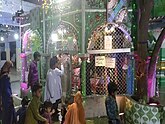
Pir Syed Mansur Bihari was a Sufi saint whose shrine is located in Gaya and is Managed by Khanqah Monamiya Abulolaiya. He was originally from Roh where his family held 80 Bighas or approximately 49.52 acres of land.[1] His annual Urs is on 25 Rajab.
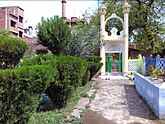
Syed Fariduddin Firdausi also known as Shah Budhan Diwan Sharaag was a Sufi saint whose tomb is located in Andheri Baoli, Shahsaram. Mughal Emperors Farrukhsiyar and Shah Alam I were his ardent followers and provided his Dargah with Rs.6000 annual stipend (₹10,41,78,000 in 2024 ).[1]
Massacre at Roh
[edit]Bihar was captured by Akbar in 1574 and became a Subah in 1580. In 1580, some prominent Muslim officers of Akbar, displeased with his liberal religious policies, started to conspire against him. Qazi Muhammad Yazdi and Muiz ul Mulk declared it the duty of every Muslim to rebel against Akbar. In Bihar and Bengal they declared Mirza Hakim, Akbar's stepbrother and Governor of Kabul, to be the emperor.[7]

In 1581, the Rajas of Roh, Mughal vassals loyal to Emperor Akbar, orchestrated the massacre of Qazi Syed Muhammad Taj and his family, who held the position of Qazis in Sunderpur, Roh. Among the victims, only Syed Abdul Razzaq, the youngest son, survived. He was eight years old at the time.
Syed Abdul Razzaq's survival was attributed to his jugular vein being unsevered during the attack, which earned him the sobriquet "Sharaag" (Persian for "jugular"). Rescued by his relatives, he was raised in Badi Dargah, Bihar Sharif, where he received his early training in Sufi practices.
At the age of 19, in 1592, he traveled to the renowned Al-Nizamiyya of Baghdad, where he pursued advanced studies in Sharia Law according to Hanafi-Shafi principles, and furthered his spiritual education in Qadiriyya, Chistiyya & Bektashi Sufism. Upon completion of his studies, he returned to Bihar Sharif, where he upheld his family’s judicial and spiritual heritage as a Qadi.
He later retired from formal service & became involved in preaching Sufi Practices during which the region of present day Rajhat served as his Chillagah. He is buried at Rajhat Shareef Dargah and is venerated as a Pir.
Later Mughal Era
[edit]
According Abdul Hamid Lahori, in 1622, Prince Khurram raised an army and marched against his father and Nur Jahan. In November 1623, he found safe asylum in Bengal Subah after he was driven from Agra and the Deccan[8].
Syed Muhammad Zarif with other disgruntled local chieftains and warlord joined his army at Akbarnagar, Bihar.They fought against the then Subahdar of Bengal, Ibrahim Khan Fath-i-Jang, on 20th April 1624. Shah Jahan then moved his encampment to Patna after which Syed Muhammad Zarif led a charge against the Raja of Roh, an ally of Nur Jahan, as the Prince's vassal. Following the battle they were displaced 100 kilometres away to Rajdhanwar (Raj-kingdom Dhan -Wealth awar- lost/in the past), Giridih, establishing the Estate of Rajahata (Raj-Kingdom, Hata- Removed) which later evolved into Rajhat. The title Shareef was added to denote the presence of Syeds as was customary which is why it was also called the Rajhat Sharifate
Prince Khurram referred to Syed Muhammad Zarif with the honorific Shah Hasib ( Persian for Honourable Lord) which was later adopted by him and his family as a title when they were ennobled by Shah Jahan on his succession in 1628 and given the rank of Mir(commander).[9]

Mir Zarif used his privilege to invest in trading with Iran and the Ottoman Empire. In 1645, he patronised a trader, Muhammad Nasir who bought for him 50 loads of indigo worth 12,500 ghurush that were sold in Istanbul and another40,000 ghurush-worth of unspecified Indian goods shipped out of Alexan-dretta for Venice. Returning from Venice, he had imported goods worth 60,000 ghurush that he intended to take by caravan to Basra and from thereto India. The volume of those transactions dwarfed anything registered by either European or Iranian merchants in the seventeenth century, but at the same time, it survives as the only recorded example of a large-scale transaction conducted by an Indian merchant in the city of Istanbul.[10]
Mir Zarif was also invested in horse trading from Isfahan, Iran for earning him the epithet Mir Zarif Isfahani.
In 1637, when Shahjahan’s plans for the occupation of Qandahar were in an advanced stage, he sent his first embassy to Istanbul. The professed purpose of this embassy, led by Mir Zarif, was the purchase of horses for the royal stable from Arabia and Turkey. Mir Zarif had earlier been sent to Iraq to buy horses. But the horses he had brought, we are told by the chronicler Abdul Hamid Lahori, had not come up to the emperor’s expectations. At his own request, he was again sent on the same errand to resuscitate his credit and prestige.The Mir was entrusted with a friendly letter, drafted by the Mughal Wazir, and a priceless girdle set with diamonds for Sultan Murad Khan. As Mir Zarif intended to go via Hijaz, the Portuguese were requested to grant a free passage to him. Mir Zarif had accompanied Mir Baraka, who presented 1000 pieces of finely embroidered cloth and even armor to Sultan Murad IV of the Ottoman Empire, in Baghdad as Diplomats of the Mughal Empire. Sultan Murad IV in return gave them the finest weapons, saddles and Kaftans and ordered his forces to accompany the Mughals to the port of Basra, where they set sail to Thatta and finally Surat. It was through these exchanges that Shah Jahan received Mimar Yusuf, Muhammad Effendi and Ismail Effendi, architects of the Taj Mahal[11] During this time, the Mughal Empire also witnessed significant investments in cannons and artillery. Recognizing the importance of firepower in warfare and defense, Shah Jahan expanded the Mughal artillery corps and supported the establishment of artillery workshops across the empire. Skilled artisans and craftsmen were brought from the Ottoman Empire, Hungary, Iran and Russia and manufactured cannons of various types and sizes, incorporating technological advancements to improve range and effectiveness. Some of these were named Zafar Mahal, Baz Bahadur and Sehbur.[11]
Mir Zarif served as one of Shah Jahan's advisors until the accession of Aurangzeb who had Shah Jahan imprisoned at Agra Fort and proceeded to have his loyalists removed from Imperial posts. Aurangzeb's antagonism towards the Sufi sect of Islam, to which the Hasib family belonged to, as well as his fundamentalist & extremist ideology further alienated the family from mainstream politics at the time.
In 1708, Bihar came under the control of the Nawabs of Bengal, Bihar and Orissa. The Nawabs became the financial backbone of the Mughals and the Hasibs profited from it greatly and were able to regain a large part of their political influence, as they were closely related to many of the Mirs of Bengal.[12]

In 1757, Bihar and Bengal came under British Rule after the Battle of Plassey and in 1764, the East India Company was given Diwani rights. Mir Syed Lutfullah was married to Noorani Begum, a niece of Mir Jafar which helped the expansion of the Rajhat Estate through partnerships, trades and government funds. After the deposition of Mir Jafar by Mir Qasim, the Hasibs were quick to pledge their allegiance to the new Nawab of Bengal.[12]
In 1781, Raja Ali Akbar of Narhat was defeated in a revolt against the British during which time he had laid waste to parts of the Rajhat Estate in Rajauli. After his defeat, some of his estates were transferred to the Rajhat Estate under Mir Syed Jamal Ali as compensation.[13] Mir Syed Jamal Ali was married into the family of Mir Syed Hidayat Ali, the Nawab of Makhdumpur.[14] This also saw a period of demilitarisation. The Zamindars of Rajhat had a Infantry of 500 men (Sipahi) and a cavalry of 100 (Sowar). The British East India Company shifted their troops to the Barrackpur Cantonment, effectively taking away their military power while letting them retain their military titles.
At their peak, the Hasibs were The Taluqdar of Rajauli, spread over an area of 370 sq km with a total of 170 villages for which they collected revenues and administered, except for the Village of Rajhat Shareef which was a personal land grant (Jagir). The Hasibs became known for their contributions to the fields of literature, bureaucracy, judiciary and medicine, serving as courtiers for the Nobility Of Bihar & Bengal.

They financed the construction of the Jama Masjid of Rajhat, the Rajhat Urdu Boys High School, Rajhat Qazi Kabrastan, Akbarpur Bazaar. They donated funds to Syed Hadi Al Hashmi, a native of Rajhat Shareef and brother of Syed Abd Al Bari for the founding of Hadi Hashmi Muslim High School and to Nawab Syed Wilayat Ali for Patna College through Professor Syed Majid of Pachrukhi who was one of the first professors at Patna College.

The main mansion of the Zamindars in Rajhat was called Hasib Kothi. It was made using a Mud-cement mixture of clay, pulses and calcium oxide(Chuna) with pillars made from Borassus Wood and wall slabs made of bamboo and Mud-cement. Doors, windows and furniture were made of Sheesham while bamboo reeds and po-aal( wheat reeds) were used as bedding. The mansion had two floors as well as a basement for grain storage. The roofing was done using earthen clay tiles(Khappar). The exterior walls were approximately 2-3 feet thick, with the Lime acting as a reinforcing agent.
Stairs were made of stone or earthen bricks. This method was most preferred by the local chieftains of the time and was called Mathkothi ( Mitti- Mud, Kothi- Mansion). The Mansion became dilapidated over time and was divided amongst members. One section was converted into Madrasa by Syed Waiz- Ul- Haq. Another section was given to Syed Siraj-Ul- Islam's youngest son, Syed Yamin Ul Islam who separated it from the main building. The remaining part was given to Syed Waiz-Ul-Haq which was later sold, and Syed Ali Imam Quadrie. The pond behind the main Mansion was filled in due to prevent spreading of diseases as the pond was not being maintained.


The Anjuman-e-Rajhat is an organisation established by Mir Syed Khairullah that oversees matters related public education, upkeep of mosques, maintenance of roads and resources in Rajhat. The Mir Syed Khairullah Masjid or Jamaa' Masjid was rebuilt with bricks and cement in 2005.

End of Zamindari
[edit]Mir Syed Tafazz Al Imam had two wives, from the first he had his eldest son and heir, Shah Syed Fazl Al Imam and from his second he had his youngest, Syed Afzal Imam.[15]
Imam-Islam Branch
[edit]| Shah Hasib VIII Mir Syed Tasavvur E Imam | Musaleena Bint Taharat Alam | ||||||||||||||||||||||||||||||||||||||||||||||||||||||||||||||||||||||||||||||||||||||||||||||||||||||||||||||||||||||
| Mirza Syed Siraj Ul Islam | Syeda Khatun | Mirza Syed Waiz Al Haque | Syeda | Mirza Syed Aly Imam | Syeda Azmat Un Nisa Bint Ghiyas Al Din | Syeda | |||||||||||||||||||||||||||||||||||||||||||||||||||||||||||||||||||||||||||||||||||||||||||||||||||||||||||||||||
| Syed Shams Al Islam | Syed Masih Al Islam | Syed Moazzam Al Islam | Syed Yamin Al Islam | Syeda Tamizan | Maulana Syed Abd Al Farah Hazaribagh | Syed Mustahsan Al Islam | Syed Ahsan Al Islam | D.Syed Hussayn Imam Quadrie | Dr.Syed Mohsyn Imam Quadrie | ||||||||||||||||||||||||||||||||||||||||||||||||||||||||||||||||||||||||||||||||||||||||||||||||||||||||||||||
Mir Fazal Imam became the Zamindar of Rajhat and married Begum Aqla bin Syed Qasimuddun Rajhati, their children were Shah Syed Tasavvur Imam and Azmat un Nisa. Shah Syed Fazal Imam had his second marriage to Bibi Aamna, the daughter of the Subahdar of Shahsaram Hasibuddin Khan and his wife, Salma Khatun. Subahdar Hasibuddin later recommended Syed Shah Fazal Imam to the Administration to take up the Subahdari after him since he had no sons. Though the office was not hereditary and Subahdars were chosen by the Administration based on loyalty, administrative capabilities, and military prowess, individuals held the position of Subahdar for multiple generations due to their continued service and favor with the Emperor as well recommendation of their predecessors and seniors. Thus the family came to hold the office of the Subahdars of Shahsaram.
His sons through this marriage were Maulana Waliuddun, Dr. Mujiburrehman (BHMS Gold Medalist) and Padma Bhushan Prof. (Dr) M. A. Hai, M.D.
The penultimate zamindar, Mir Shah Tasavvur Imam was married to Mursaleena bin Syed Taharat Alam. He was a courtier of the H.H.Maharaja Trivani Singh of Hisua Estate.
Azmat un Nisa was the Mother of Maulana Syed Shah Ghayasuddin Hasan Shareefi Rizwi of Sasaram.
He faced much difficulty, with the estates dwindling from the effects of abolishment of the zamindari system post independence, financial mismanagement of the previous generations, indulgent attitude of the nobles and political complacency. It was reported that in his mid fifties, he showed increasing erratic and unstable behaviour. He began to suffer nervous breakdowns and extreme and sudden changes in mood, he confined himself to his bedroom refusing to meet or speak to anyone, including family lawyers, doctors and government agents. A messenger had once come from the government bungalow at Nawada, bearing news that the British were leaving and the zamindari would soon be abolished but was not acknowledged.
By the mid 1970s, majority of the estate was captured by local peasants or confiscated by the Indian government. Members of the family started to migrate to the newly formed state of Pakistan where they were compensated for their property in India and given administrative positions in the beauraucracy.[16]
Maulana Syed Siraj ul Islam studied from Madrasa Kabiriya, Shahsaram and became an Alim. He was the Assistant Inspector of schools under Bihar Board until 1947 when he migrated to Dhaka. With the onset of Bangladesh Liberation War he migrated to Karachi via India where he sold his remaining Indian properties. His oldest son, Syed Shamsul Islam was Chief Budget Officer in Pakistan Railways Karachi Division. His second son, Syed Masih ul Islam served the State Bank of Pakistan, Dhaka where he became Joint Director in Karachi and retired in 1995. Syed Shad Ibn Masih ul Islam is Assistant Inspector General Of Sindh Police (AIGSP)[17]
Syed Aly Imam Quadri was married to Fatima bin Syed Shah Ghiyath Al Din Shareefi Razvi [18] and their children were Syed Hussayn Imam Quadrie and Syed Mohsyn Imam Quadrie. He was an Alim (Islamic Professor) from Madarsa Kabiriya, Shahsaram. After Begum Fatima's death he migrated to Dhaka and left his children, Syed Hussayn and Syed Mohsyn aged 16 and 14 respectively, in Shahsaram with their maternal grandfather, Syed Shah Ghiyas Al Din. Syed Waiz Ul Haq managed the remaining estates. Syed Hussayn was offered a position in the Pakistan Navy at the age of 19 in 1949 but turned it down.
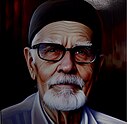
With the onset of the Bangladesh Liberation War in 1972, members of the family were targeted by the Awami League and were rescued from Dhaka and transported to Karachi via rail. Syed Aly Imam was captured by Bengali Nationalists and held for two days in a classroom at the University of Dhaka. He was rescued by a Bengali Ward Commissioner whose children he had taught and who smuggled him to Karachi.
Renowned religious scholar Syed Muhammad Mateen Hashmi, who was his former student from Jehanabad, along with his nephew Syed Masih Ul Islam, supported him in Karachi until he returned to India in 1985.
Syed Hussayn and Syed Mohsyn were trained in homeopathic and allopathic medicine by the Khalifa's son, Dr. Syed Faiyaz Al Din Razvi after which Syed Hussayn practiced in Hasan Bazar, Sasaram for a year and then in Nahauna, Rohtas for two years. He then migrated to Itwan, Bodh Gaya on the invitation of Mutawalli Syed Abu Muhammad Amin of Tekari Raj.
Dr.Syed Hussayn Imam Quadri married Syed Sajida Khatun, daughter of Syed Muhammad Amin of Pirbigha in Itwan, the Tehsildar of Tekari Raj and the maternal grandfather of Syed Najam Imam of Khanqah Mazahirya in Gaya.


Syed Muhammad Amin worked in the Tehsildar office of Nawab Bahadur Syed Walayat Ali Khan at the age of 13. At the age of 18 he became a Junior Tehsildar under the Maksudpur Estate. He became a Tehsildar himself at the age of 23 under H. H. Maharaj Gopal Saran Narayan Singh Tekari. He was offered the Dewani under Kumar Rani Syeeda Khatun's Estate in the Aurangabad Circle by Kumar Rani Syeeda Khatun after her divorce with H. H. Maharaja Gopal Saran Narayan Singh. He however, turned this down and continued to serve the Maharaja. He was gifted the Royal Hunting Lodge Of Tekari, Konya Lodge as his personal land grant which his family still holds to this day. His eldest son Syed Muhammad Yasin Amin was appointed the Manager Of The Tekari Estates by H.H. Maharaja Rajbir "Reggie" Singh Tekari who was married to Princess Pearl Of Jind State Syed Yasin passed away soon while in a hunting accident with Reggie Baba after which his younger brother Syed Abu Muhammad was appointed the Manager Of The Tekari Estates . His nephew Syed Faiz Amin served as Manager Of The Estate to H.H. Kunwar Ashish Bir Singh, the titular ruler of Tekari Raj, son of Maharaja Rajbir "Reggie" Singh and Princess Pearl Of Jind, under the regency H. H. Maharani Gurcharan Kaur Of Jind, wife of Maharaja Ranbir Singh the last Maharajah Of Jind State until the late 2018 when the Maharaja relocated to Delhi. They were also distantly related to Nawab Syed Wali Imam of Gaya, whose mansion was currently donated to Manav Bharti High School Gaya. Syed Faiz's father, Syed Manzar Amin is a lifelong friend and hunting partner of Too Too Imam as well his son Bulu Imam.


Syed Hussayn Imam Quadrie opened the first medical clinic in the district of Mohanpur. He financed the education of many underprivileged families in the area and was a well respected member of society.


He helped develop many segments of the Itwan market and established it as an important town on the Grand Trunk Road route to Gaya and was a close advisor of the Zamindar of Itwan, Raees Imam Khan.He promoted quality education and healthcare in the region.
His eldest Son, Syed Sajjad Imam Quadrie is holds a B.Sc Chemistry degree from Magadh University as well as an MBA from the University of London and is the Director of Revenue Management and Business Management at Prime Healthcare Group LLC, UAE and Lead Assessor at Department of Economic Development (Dubai). He started as a Medical Representative in Action Medicine Company for a year in Patna after joining as a Medical Representative in Walter-Bushnell for a year. He then joined Pfizer as a Professional Services Officer in 1990 working in Rajasthan, Uttar Pradesh and Jharkhand later becoming District Manager in Kota, Rajasthan in 1995. He became the General Manager for Pfizer in Nepal in 1996, helping set up Business Operations including drug registration in Nepal Drug Formulary, field manning and distribution. He joined the Prime Healthcare Group LLC in Dubai as a General Manager for Marketing and Business Development in 2004.
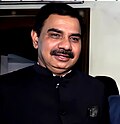
His second son Syed Jafar Imam Quadrie holds a B.Sc Pharmacology( Distinction) from Magadh University and is the founder of Medicino Enterprises, a pharmaceutical distribution firm based in Gaya (India) which he started with a capital of ₹10,000 (₹119,000 in 2024) which became the only enterprise being able to supply pharmaceutical into Naxalite Insurgent controlled regions in Bihar. This was a landmark achievement as Maoists had effectively blocked all trade and transportation routes in Southern Bihar as well as regions along Odisha- Bihar and Jharkhand-Bihar Border along with persecuting and murdering businessmen, engineers, doctors, government servants etc. Syed Jafar was able to negotiate with the Maoists and get an understanding to allow the transportation of pharmaceuticals. Medicino thus became the one of the only suppliers of antibiotic and allopathic medications of multinational pharma companies like Pfizer, Aristo, Abbot etc in the deep Red corridor. The company also enjoyed support from regional Rashtriya Janata Dal leaders such as Rajesh Kumar, Lalu Prasad Yadav and Bindi Yadav, winning contracts to supply government health camps, hospitals, local doctors and sometimes even the military. The first Diagnostic Centre was opened in 2022.
Increasing caste based violence and Maoist Insurgency led to the massacre of Syed Hasnād, the Zamindar of Chak, Sherghati and his family by the Maoist Communist Centre of India with help from his barahil. Only his youngest son, Syed Nazish survived since he was studying in Jamia Millia Islamia at the time. Child kidnapping incidents were on the rise in Bihar in the early 2000s with multiple children being kidnapped from Gaya and Patna. This environment along with better education prospects prompted Syed Jafar to shift his family to Mumbai.
The current members reside in Ashrafbagh Kothi, Itwan, Gaya.
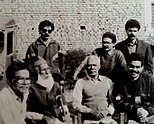

The ancestral house at Rajhat Sharif eventually became dilapidated and was not rebuilt as the land was divided amongst the members of the family.

Sardar Raees Imam Khan was the adopted son of Syed Mazahir Imam, hence he had the surname Imam along with his biological father's name, Khan. He was a Yusufzai Pathan whose clan became prominent as commanders in the army of Sher Shah Suri. His father, Sardar Haji Nabi Hasan Khan was the Zamindar of Itwan.
Dr. Syed Hussayn Imam Quadrie is also closely related to Syed Saba Karim as both their maternal grandmothers were sisters. Syed Husayn was also the brother in law of Syed Manzar Karim's younger son, Syed Iqbal Karim.
Syed Saba Karim's grandfather was Desert Explorer and British-Indian Spy Capt. Dr.Syed Manzar Karim ( L.R.C.P., M.R.C.S. ) and worked as a military surgeon the British Indian Army. He joined the army in 1936 and was stationed in Egypt as part of the 3rd Indian Motor Brigade in 1940.
During World War II he served from 1939 to 1942 in Egypt and achieved the rank of Captain. Later he was assigned on reconnaissance missions to Iraq and was selected by Spymaster Ralph Bagnold for the Long Range Desert Group in 1942.
Once, while conducting reconnaissance operations behind enemy lines in Iraq the jeep in front of him hit a mine and he was knocked over by the blast which also made him lose his two front teeth. The group was presumed dead and a telegram was sent to their families declaring them Killed in action however later they were able to escape and return to camp.
He was involved in Operation Compass, Operation Brevity, Operation Crusader and the Second Battle of El Alamein. He was awarded the Military Medal and Africa Star for his services.
He was also involved in excavation and selling of antiques and treasures found in Iraq in the ancient cities of Uruk and Babylon. He was an honorary member of Royal Geographical Society In Egypt
Post War he returned to Sasaram where he had been presumed dead for over 3 years. He became a surgeon in Sadar Hospital, Sasaram.
The family is distantly related to Neelima Azeem through their cadet branch in Barsot, Rajauli through her father Syed Anwar Azeem.
The family is closely related to the Syeds of Zarlahi Kothi, Gaya through Syed Muhammad Amin and Syed Manazir Imam. The Syeds Of Jarrahi/Zarrahi/Zarlahi Kothi were one of the first British trained medical surgeons of India and served as Royal Physicians to every major aristocratic family in Bihar and Bengal. The word Jarrah comes from the Arabic word "Jarrah" which means surgeon. Though the main patrilineal line is extinct the remaining current members of this family reside in Canada and England.
Wassan Branch
[edit]| Syed Wasi Al Din Wassan | Syeda Ghausiya Bint Nabi Jaan Hafiz | ||||||||||||||||||||||||||||||||||||||||||||||||||||||||||||||||||||||||||||||||||||||||||||||||||||||||||||||||||||
| Syed Muhammad Shafi Wassan | Syeda Afifa Bint Azimuddin | Syed Muhammad Rafi Wassan | Syed Javed | Syeda Shehla | Mirza Syed Muhammad Akbar Wassan | Syeda Rounaq Bint Ghiyas Al Din | |||||||||||||||||||||||||||||||||||||||||||||||||||||||||||||||||||||||||||||||||||||||||||||||||||||||||||||||
| Syed Ata Hussain | Syeda Mehreen | Syed Akbar Ibn Mohsyn Imam Quadrie | Syeda Ayman | Syed Monam | Syeda Rida Al Fatima | Syed Aasim Ibn Adil Wassan | |||||||||||||||||||||||||||||||||||||||||||||||||||||||||||||||||||||||||||||||||||||||||||||||||||||||||||||||
Syed Afzal Imam was a close advisor to his step brother. His son Syed Marhamat Hussayn served as an Inspector of Police at Nawada.
In the period of 1857-1869 there were multiple rebellions in the Nawada district with a majority occurring in Rajauli against the Kamia system of bonded labor. Syed Marhamat Hussayn served as Inspector of the Imperial Police in Nawada at the time and participated in anti-rebellion activities including arrests, interrogations & imprisonment. The most famous rebellion was by Rajwars, who belonged to the erstwhile ruling class before the subjugation of Bihar by the Mughals and claimed descent from Bimbisara. This resulted in looting and burning of the police station and government bungalow at Nawada as well as attempts to assassinate the various members of the government & aristocracy. This lead to the British Government adopting an exceedingly brutal policy against the rebels. In the aftermath, to placate the locals, many police officers were imprisoned in Kalapani, including Syed Marhamat Hussayn. He was later granted bail which was financed by his son, Syed Ghulam I Jilani after being imprisoned for some years.[19]
Syed Ghulam Jilani's oldest son, Syed Ghulam Rabbani, worked in Calcutta as a Railway Officer for some years and returned to manage his estates. He was married to Khadija Al Kubra, the daughter of Rais Mir Syed Qasim, the Nawab of Makhdumpur and his second wife, who was the granddaughter of Nawab Syed Mohammad Haider Kazmi of Kakori, in 1877.[20]
Ghulam Jilani's estates were managed by his youngest son, Advocate Syed Azhar Hussain Mukhtar.
Syed Bismillah I. Azim who was an Officer in Bihar State Education Department. His daughter was married to Dr. Syed Hasib Hussain, a Professor of Veterinary Science at Patna University who was the son of Dr. Syed S. Hussain, Vice Chancellor of Ranchi University.
Syed Wasi-Al-Din Ahmad "Wassan" ventured into the optics business in Calcutta where and was a custodian of the Shia Library at Siraj building, Zakaria Street, Burrabazar. He was appointed as Mutawalli of the Shia Waqf Properties in Burrabazar in wake of the aprtition of India. He continued the tradition of ziyafat and his house became known as a Serai for many travellers of the community.

Their ancestral house, Wassan Cottage is located at Syed Wasiuddin Ahmad Road, Rajhat.
Syed Muhammad Shafi Wassan was a student of Ritwik Ghatak in Kolkata in where he also served as his caretaker during his alcoholism and depression in 1970. They had met during the publicity of his film Subarnarekha and accompanied him to Tollygunge for his shooting. Ghatak Attended his first Play "Dharti ke Ghaav" as a chief guest. Coming to Mumbai with his brother, Syed Muhammad Rafi, acting as producer, Shafi was advised against using a Muslim stage name,especially his Syed caste name due to the stigma attached to the entertainment industry. He first used the pen name M.S.Rajender (Muhammad Shafi Rajender) however he later dropped this and used his legal name.
Ghatak and him had travelled to Mumbai in 1971 where they lived together near Mahim church. Ghatak later sponsored him when Shafi went to Mumbai in 1973 and became a scriptwriter and assistant director under Lekh Tandon in Dulhan Wahi joh Piya Man Bhaye, under RK Nayyer in Qatl, under Farogh Siddique in Jigar, under Akbar Khan in Hadsa, under Raja Nawathe in Gumnaam on the recommendation of Ghatak.
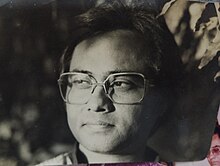




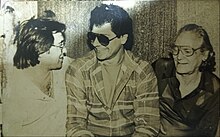
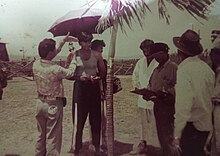




He directed the Haryanvi film Panghat with Usha Sharma in 1984. He was Chief assistant director in Chandrakanta. He also worked in the films Aangan ki Kali and Bhula Na Dena. In 1994, he directed a documentary "Eid ka Chand" with Javed Jaaferi as an anchor where they formed a lifelong friendship. He had married Afifa, daughter of Syed Azimuddin who was aCID Inspector in Kanpur,Uttar Pradesh.

He became a murid of Sufi Mansur ul Hasan of Mulund and attended a seminar on Sufi-Jain Interfaith Dialogue on his behalf, with Acharya Mahapragya and they remained good friends until the latter's death.
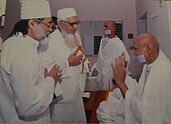
He hosted a programme "Adyat mei Samaanta ke Swar" in Rajasthan where he spoke on religious unity. He accompanied Acharya Mahapragya to Ajmer Dargah. He is a strong proponent of interfaith dialogue and a practicing Sufi.

Apellations
[edit]The complete apellations of Syed Fazal Imam were:
Nasl Al-Nabi, Aulad Al-Ali, Nasb Al-Sassani, Najib Al-Tarfayn, Shah Hasib Mir Syed Fazal Imam Al Halabi Al-Hussaini Al- Hashemi, Afsar e Ala, Miran - e - Rajauli, Subehdar-e-Shahasram
It is important to note that the title Mian (title) was used for members of the family without formal office.
Current Members
[edit]·Syed Wali Ibn Masih Ul Islam
·Syed Shad Ibn Masih Ul Islam
·Syed Faizan Ibn Mustahsan Imam
·Syed Fahad Ibn Mustahsan Imam
·Syed Faisal Ibn Mustahsan Imam
·Syed Sajjad Ibn Hussayn Imam Quadrie
→Syeda Nadia Sajjad
→Syed Hisham Sajjad Imam
→Syed Zayna Sajjad Imam
·Syed Jafar Ibn Hussayn Imam Quadrie
→Syed Ayn Hayder Ali Imam Quadrie
→Syed Suhayb Imam Quadrie
·Syed Mubarak Ibn Hussayn Imam Quadrie
→Syed Ahmad Imam Quadrie
→Syeda Sarah Mubarak
·Syed Asad Ibn Hussayn Imam Quadrie
·Syed Monis Ibn Mohsyn Imam Quadrie
·Syed Akbar Ibn Mohsyn Imam Quadrie
→Syed Hasan Imam
→Syeda Zainab Akbar
·Syed Yawar Ibn Mohsyn Imam Quadrie
·Syed Adil Ibn Shafi Wassan
·Syed Wahdat Ibn Rafi Wassan
·Syed Afreen Ibn Rafi Wassan
·Syed Tamkin Ibn Rafi Wassan
·Syed Takmil Ibn Rafi Wassan
·Syed Intekhwab Ibn Akbar Wassan
·Syed Asad Ibn Akbar Wassan
·Syed Shujat Ibn Akbar Wassan
·Syed Hammad Ibn Akbar Wassan
Controversies
[edit]Diwan E Ghaib
The Hasib family has traditionally followed Hanafi school of Islamic Jurisprudence along with Qadiriyya & Chishti Order Sufism. Individuals have been reported to be believers in Twelver Shi'ism and Salafi Islam .
The family was rumoured to be linked to the Diwan E Ghaib (The Hidden Council) or simply Ghaibat, a religious sect of assassin-monks who followed a blend of the Qadiriyya and Bektashi Tariqas inspired from the Janissary Warrior Monks of the Ottoman Empire that Pir Syed Shah Abdul Razzaq had interacted with during his education at Al-Nizamiyya of Baghdad. This sect carried out assassinations & espionage activities during the Ascension of Shah Jahan at the latter's behest as well as during the Mughal war of succession (1658–1659) in support of Dara Shikoh which contributed to their political alienation in the later stages of the Mughal Empire after the ascension of Aurangzeb.
Arab Slave Trade
The Hasibs, like many aristocrats and businessmen of that era, operating from muslim countries, heavily invested in Arab slave trade. This contributed majorly to their initial wealth.
Endogamy
Also See : Caste system among South Asian Muslims
The Hasibs traditionally practice Endogamy which is customary in many Syed Clans in order to preserve Blood purity and have held traditional beliefs in Eugenics which has been criticised by Secular Academics as well as Islamic Theologians comparing their Tribal Social Structure to the Caste system in India which is opposed to Islam, as well as to the tribalism In Pre-Islamic Arabia focusing too much on sanctity of bloodlines and tribal relationships. This system is seen as a justification of the generational birthright of the Hasib Family in the Indo-Muslim Society as well as to prevent Morganatic marriage and not adhering to these standards can result in social stigma. This practice has also led to a very small gene pool with many marriages occurring between relatives and even across generational boundaries.
This has also led to villages or pockets neighborhoods being formed which consist of only Syeds or Ashraf groups . Such places always carry the suffix Sharif or Pirbigha or Piran. The ashraff also have their own social associations such as The National Anjuman E Sadat and Sadat E Bihar ( Syeds of Bihar) Associations usually headed by prominent members of the community.
The suffix Sharif was added to locations where Syeds were part of the landed aristocracy whereas the suffix Pirbigha was added to locations where Syeds were members of the Islamic Clergy.
References
[edit]- ^ a b c d Rasool Hashmi, Syed Abu Huraira Virasat 1995, Silsila Ashraf ul Ansab, Karachi Publications. p. 336
- ^ Sasarami, Sahil 2002, Ghayasuddin Hasan: Hayat aur Shayari Khanquah Ghayasia Sharifiya, Sasaram, p. 48
- ^ https://gate.ahram.org.eg/News/1594671.aspx
- ^ https://web.archive.org/web/20190526224327/http://gate.ahram.org.eg/News/1594671.aspx. 2019-05-26. Archived from the original on 2019-05-26. Retrieved 2023-11-12.
- ^ Kumar, Sunil (2002). The Present in Delhi's Pasts. Three Essays Press. ISBN 978-81-88394-00-5. p. 20
- ^ Ichimura, Shōhei (2001). Buddhist Critical Spirituality: Prajñā and Śūnyatā. Motilal Banarsidass. p. 65 (note 87). ISBN 978-81-208-1798-2.
- ^ Faruqui, Munis D. (27 August 2012). The Princes of the Mughal Empire, 1504-1719. Cambridge University Press. pp. 137, 139. ISBN 9781107022171.
- ^ Hossain, Syud (1909). Echoes from Old Dacca. Edinburgh Press. p. 6.
- ^ Rasool Hashmi, Syed Abu Huraira Virasat 1995, Silsila Ashraf ul Ansab, Karachi Publications. p. 340
- ^ Damascus, Aleppo Court Records, vol. XXIV, pp. 202, 212; Istanbul, BBA, MM 2765, p. 100.
- ^ a b A Study of Political & Diplomatic Relations between Mughal India and the Ottoman Empire, 1556-1748), Naimur Rahman Farooq, Prof. of History Lal Bahadur Shastri National Academy of Administration, Mussorie
- ^ a b P. J. Marshall (2 November 2006). Bengal: The British Bridgehead: Eastern India 1740-1828. Cambridge University Press. pp. 58–60. ISBN 978-0-521-02822-6.
- ^ Tahir Hussain Ansari (20 June 2019). Mughal Administration and the Zamindars of Bihar. Taylor & Francis. pp. 298–299. ISBN 978-1-00-065152-2.
- ^ Rasool Hashmi, Syed Abu Huraira Virasat 1995, Silsila Ashraf ul Ansab, Karachi Publications. p. 354
- ^ Rasool Hashmi, Syed Abu Huraira Virasat 1995, Silsila Ashraf ul Ansab, Karachi Publications. p. 363
- ^ Rasool Hashmi, Syed Abu Huraira Virasat 1995, Silsila Ashraf ul Ansab, Karachi Publications
- ^ Rasool Hashmi, Syed Abu Huraira Virasat 1995, Silsila Ashraf ul Ansab, Karachi Publications. p. 368
- ^ Sasarami, Sahil 2002, Ghayasuddin Hasan: Hayat aur Shayari Khanquah Ghayasia Sharifiya, Sasaram
- ^ Correspondence Vol No 14, Gaya District Old Records, P.219
- ^ Rasool Hashmi, Syed Abu Huraira Virasat 1995, Silsila Ashraf ul Ansab, Karachi Publications. p. 432

- in-depth (not just passing mentions about the subject)
- reliable
- secondary
- independent of the subject
Make sure you add references that meet these criteria before resubmitting. Learn about mistakes to avoid when addressing this issue. If no additional references exist, the subject is not suitable for Wikipedia.